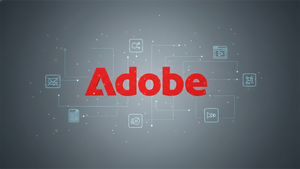Things to Consider When Deciding Whether to Change Jobs
The days of spending decades with the same employer are gone. A longitudinal study by the Bureau of Labor Statistics showed that baby boomers averaged 12.4 jobs between the ages of 18 and 54. For younger generations, the number is even higher. And each job change has implications beyond where someone shows up, physically or virtually, each day.
While people are changing jobs more frequently, especially during their 20s and 30s, the decision is rarely straightforward. There are multiple elements to weigh, from a new salary to reviewing the total benefits package, including retirement benefits and deciding whether to transfer a 401(k) to the new job. Here are two big things to consider for those on the fence about staying in their current role or taking the leap to a new one.
1. What are the benefits beyond salary?
A bump in salary can be a primary driver of moving to a new company for many people. However, employees need to consider more than just the salary. Benefits like company-sponsored insurance, a 401(k) match, and paid time off (PTO) often have significant financial and lifestyle benefits that may make up for a comparable or slightly lower salary. Let’s quickly look at each non-salary benefit and how to assess its true value.
Health and other insurance
Employer-subsidized health insurance is a significant financial benefit that can save hundreds or even thousands of dollars a month. And with average insurance premiums increasing 47% over the last decade, according to the Kaiser Family Foundation’s 2021 Employer Health Benefits Survey, every dollar contributed toward insurance by an employer helps.
When deciding the financial benefit of health insurance, assess the cost based on three key components:
- monthly premium (minus any employer contribution)
- annual deductible
- annual out-of-pocket maximum
In addition to health insurance, some employers may cover dental, vision, short-term disability, long-term disability, or life insurance. Each of these benefits should be quantified to understand the total value of the benefits package.
Retirement plans
Access to a retirement plan through an employer is a benefit in and of itself, but some employers may offer a 401(k) match, meaning the company will contribute money to the 401(k) account based on the employee’s contributions. Commonly, employers will match employee investments up to a certain percentage, like 5%.
Based on projected salary, employees can easily calculate the real value of an employer’s 401(k) match. For example, suppose an employee is considering switching to a job earning $100,000 per year with a 5% employer 401(k) match. In that case, the employer will contribute up to $5,000 per year in addition to the annual salary. However, it’s important to keep in mind that to receive the match, the employee also needs to commit a $5,000 per year investment in the plan.
When changing jobs, it’s common for employees to leave old 401(k) plans behind, meaning those accounts could be underperforming and dragging down someone’s overall financial portfolio. If the new company offers a 401(k) plan, employees will need to decide if it makes sense to move the account to the new employer or explore other options for a 401(k), like rolling it into an IRA. Either way, consolidating retirement accounts can be an effective way to streamline financial management down the road.
Stock options
Companies that have gone public or plan to do so may tout stock options or equity as a benefit for new employees. While stock options can take time to vest, equity in the company can become immensely valuable over time if the company performs well.
Calculate the projected value of stock options by assessing the current (or projected for a company that’s not yet public) stock price minus the strike price (the price an employee will pay to execute the option). Keep in mind that executing stock options may also have a tax impact, so it’s smart to consult with a tax attorney as needed.
Paid time off (PTO)
Many employers offer paid vacation days, sick days, and holidays. This benefit is a bit challenging to quantify. Still, it certainly helps with overall job satisfaction and the ability to travel or do other activities that increase enjoyment outside of the office.
2. How will the job change impact long-term career goals?
People decide to change jobs for all kinds of reasons. Some people feel stalled in their current position with limited access to learning opportunities. For others, the work-life balance may feel extremely unbalanced or nonexistent, or maybe there’s simply no room for career advancement.
No matter the reason, a new job holds promise and hope that the underlying roadblocks keeping someone from meeting their career goals will change. To assess if a job change makes sense:
- Assess long-term career goals: If someone has a 5-year or 10-year career goal, does the job change move them closer? For example, if becoming a senior leader or team manager by 40 is the end goal, will that opportunity happen more quickly by changing jobs? Or does staying put make more sense to get the desired promotion in less time.
- Be realistic about wants vs. needs: Create two lists, the parts of a job that are mandatory for happiness and those that are nice to have. For example, remote work might be necessary, but a home office stipend isn’t a requirement. If the current position meets someone’s needs but not all their wants, staying the course could be preferable to jumping ship.
Bottom line
Deciding whether to change a job is not a decision to be taken lightly. But asking the right critical questions up front can mean a greater likelihood of making a job change that’s an improvement from the current work situation.
To make saving for retirement easier when changing jobs, Capitalize helps by rolling over old 401(k)s for free. Capitalize handles the entire process, letting people focus on their new job while keeping up with their retirement goals.
Sources:
https://www.bls.gov/news.release/pdf/nlsoy.pdf
https://www.peoplekeep.com/blog/group-coverage-vs-individual-health-insurance-cost
Contact Information:
Name: Michael Bertini
Email: michael.bertini@iquanti.com
Job Title: Consultant
More News
View More



Recent Quotes
View More
Quotes delayed at least 20 minutes.
By accessing this page, you agree to the Privacy Policy and Terms Of Service.